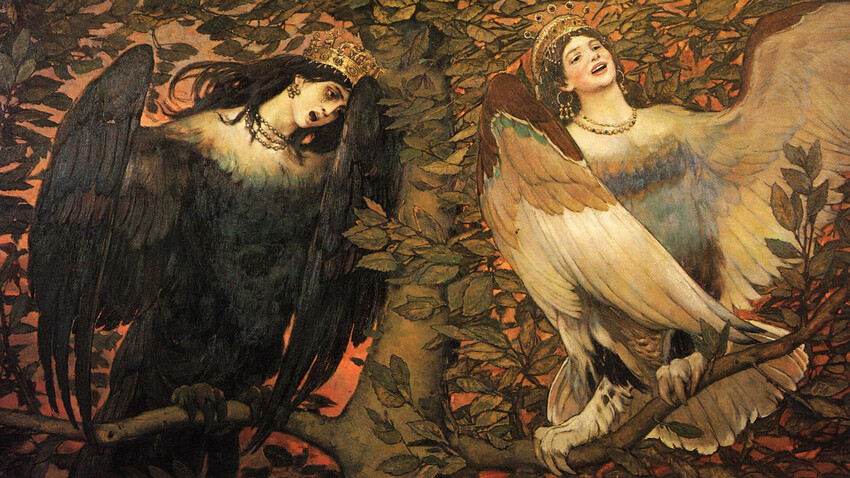
In Ancient Russian paganism, the image of a woman-bird had several interpretations and had deep roots in pagan past. Some believed that meeting these creatures promised great fortune, some believed it meant inevitable future misfortune. Among them, Sirin, Alkonost and Gamayun are most prominent. All looked like birds with the head of a beautiful woman, yet they played different roles. How precisely did these creatures differ?
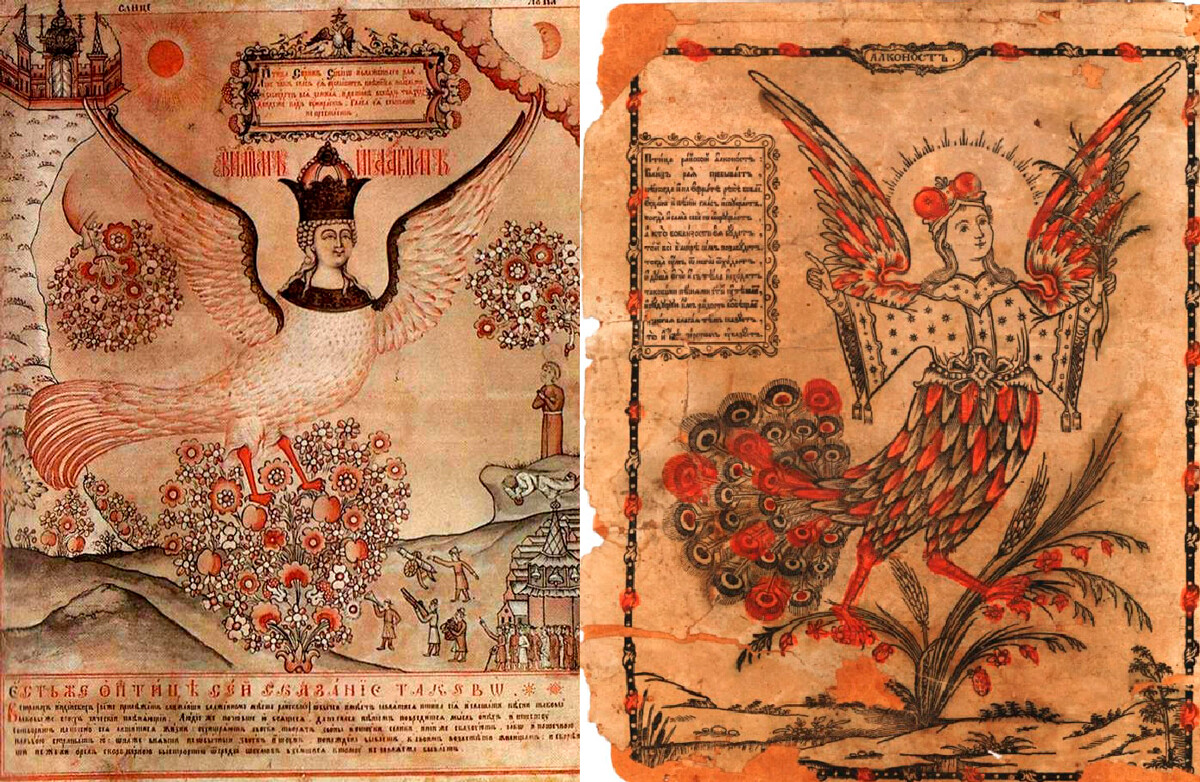
As legends have it, Sirin and Alkonost are birds from the paradise garden Iriy, where the supreme deities dwell. They can travel between worlds, so, sometimes, they end up in the earthly world. Both of them possess enchanting magical voices able to put a man into a trance and even make him go insane.
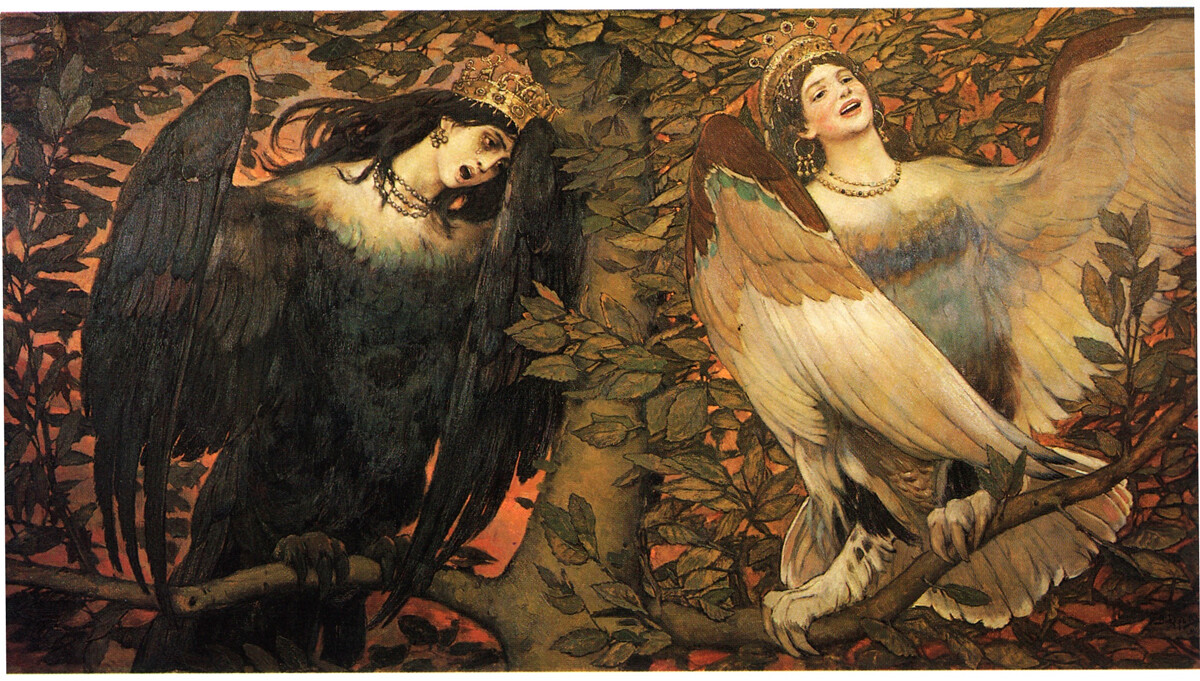
Sirin and Alconost. Birds of Joy and Sorrow, 1896, Viktor Vasnetsov
Tretyakov Gallery / Public DomainFor Slavs, Sirin and Alkonost were the manifestations of the god Veles – the second strongest in the Slavic pantheon. With time, Sirin became the incarnation of the dark side of the deity, while Alkonost – the light side. Because of this, Sirin and Alkonost are often depicted together as two inseparable birds of sorrow and joy.

The birds were distinguished by their appearance: Alkonost was very often depicted with a woman’s arms (she looks like a human being down to her waist, but with bird wings and bird claws); Sirin was depicted as a bird with just the head of a woman.
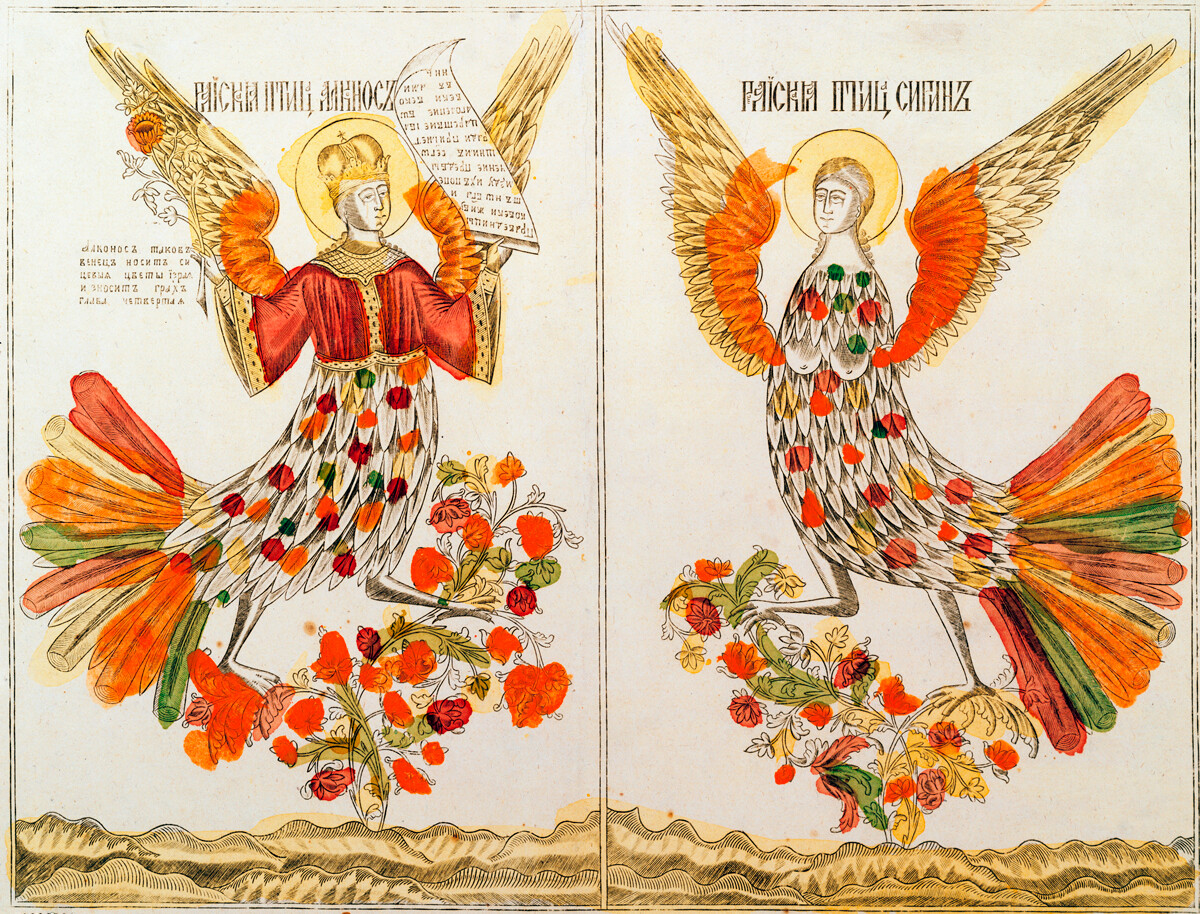
Copper Engraving, Russia, Circa 1840
Legion MediaIt was believed that the nature of their singing differed, too. While Alkonost’s singing caused no harm and brought joy, Sirin’s songs could sometimes be fatal to humans. Listening to her voice, a man forgot everything and lost his will, falling into a state of trance; he could transcend to another world or, simply put, lose his mind and die. For this reason, the folklore mentions that Sirin is afraid of loud noises. To scare her away, people ring bells and blow horns.
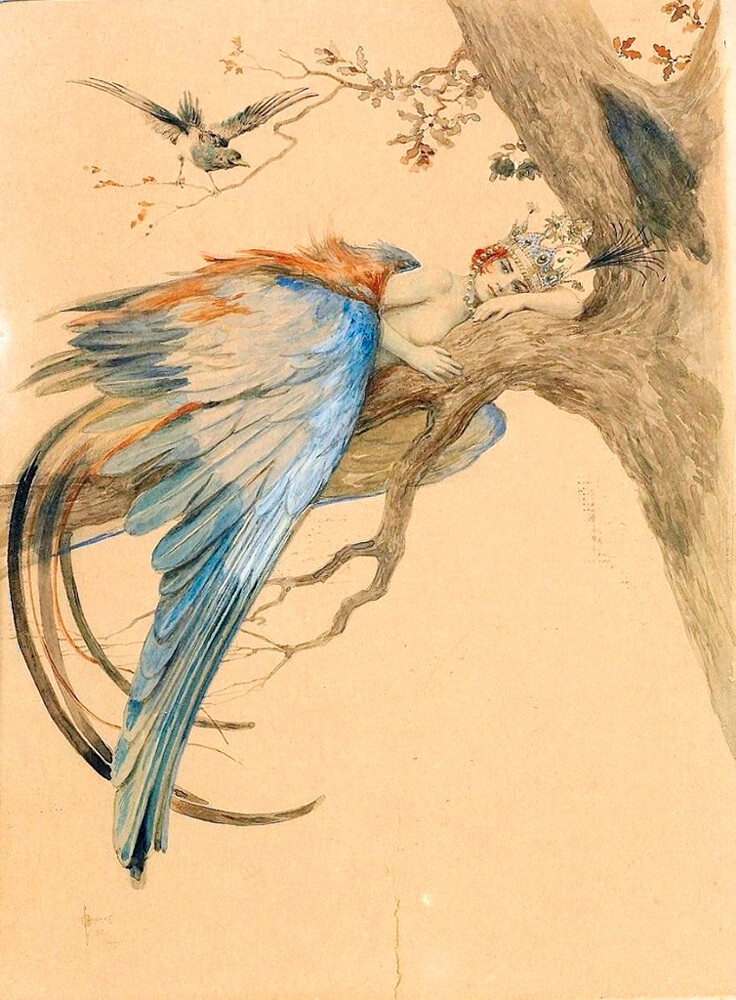
Researchers believe that the siren from Ancient Greek mythology became the prototype for Sirin, since her description strongly resembles the behavior of the creatures who lured sailors to their deaths. But, with the arrival of Christianity, the pagan image gained meaning that fit the new religious paradigm better.
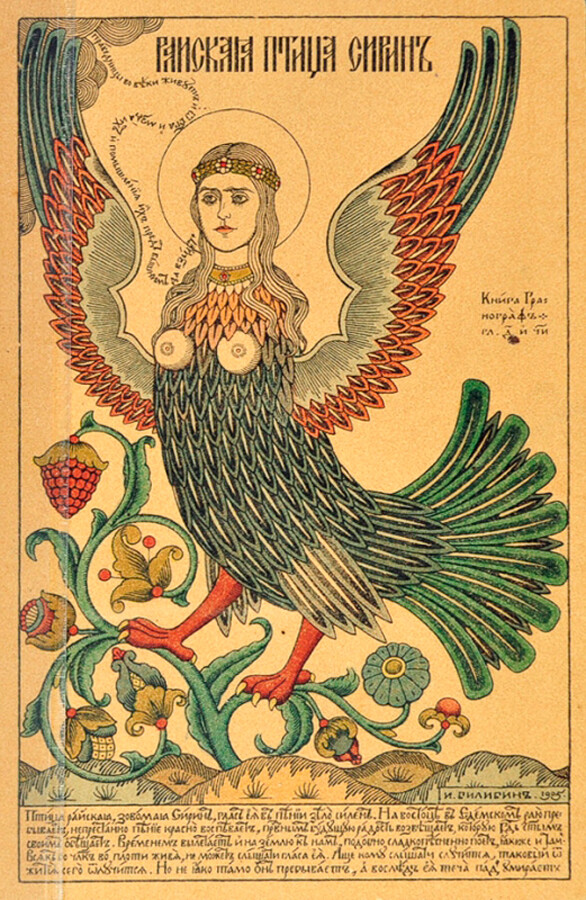
There are a small number of images preserved of a paradise bird with naked breasts. This image is considered to be more archaic, referring to the times when animism – the worship of the forces of nature – was widespread. In this form, the creature was interpreted as femininity and the incarnation of the mother of all humanity. However, the influence of Ancient Greece transformed it with time.
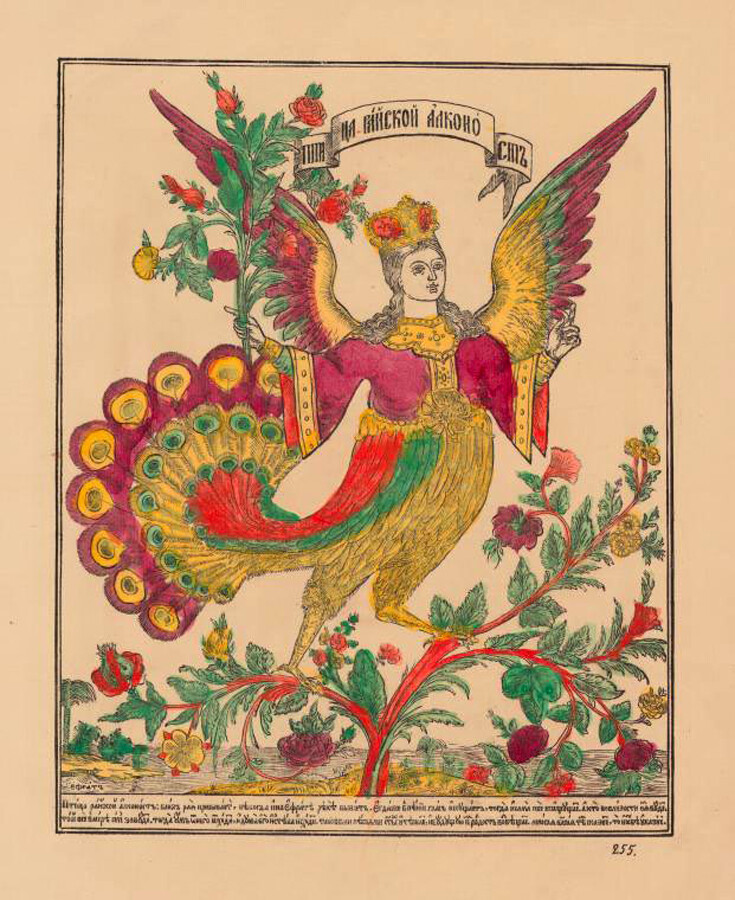
As for Alkonost, her image features borrowings from another Greek myth – the myth of Alcyone. According to this myth, Alcyone’s husband dies during a storm and she, mad with grief, throws herself into the sea. But the Gods take pity on her and turn her into a brave bird. The emergence of the word Alkonost is linked to a translation mistake in the legend of Alcyone.

In folklore, images of a magical woman-bird were popular. Her image could be found on all household items – from chests to spinning wheels and sleds. However, in this context, the creatures served as wards from misfortune.
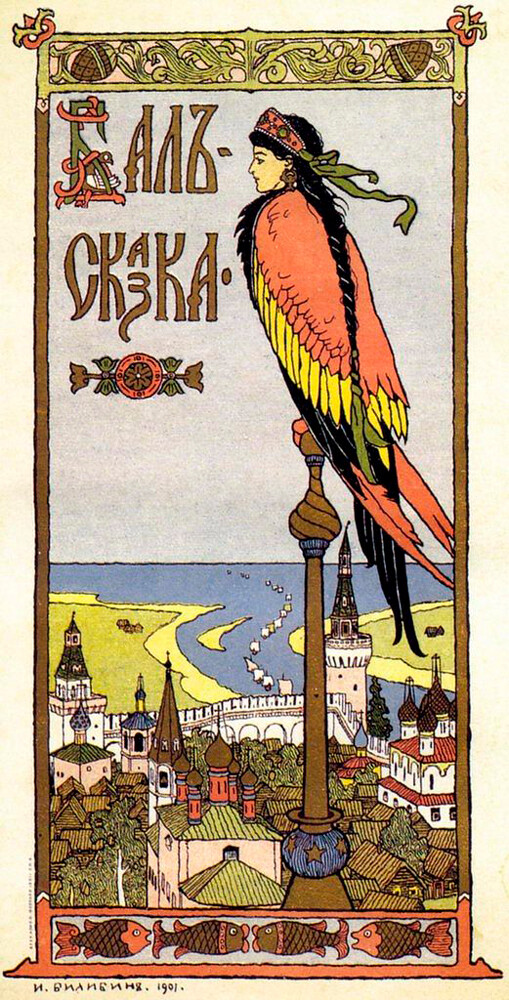
Sirin and Alkonost are also similar to another bird of paradise – Gamayun. In Russia, she was called a prophetic bird and considered the messenger of the gods. People believed that Gamayun knew everything about the past and the future, but only those who managed to understand her bird language could also understand her prophecies. In any case, the Slavs believed that the cry of Gamayun itself was already a good omen.

Baba-Yaga and the Woman-Birds. An illustration to a Russian fairy tale, 1902
Ivan Bilibin / Public DomainThe origins of her image lay in Iranian folklore, particularly in the mythical prophetic bird Huma.
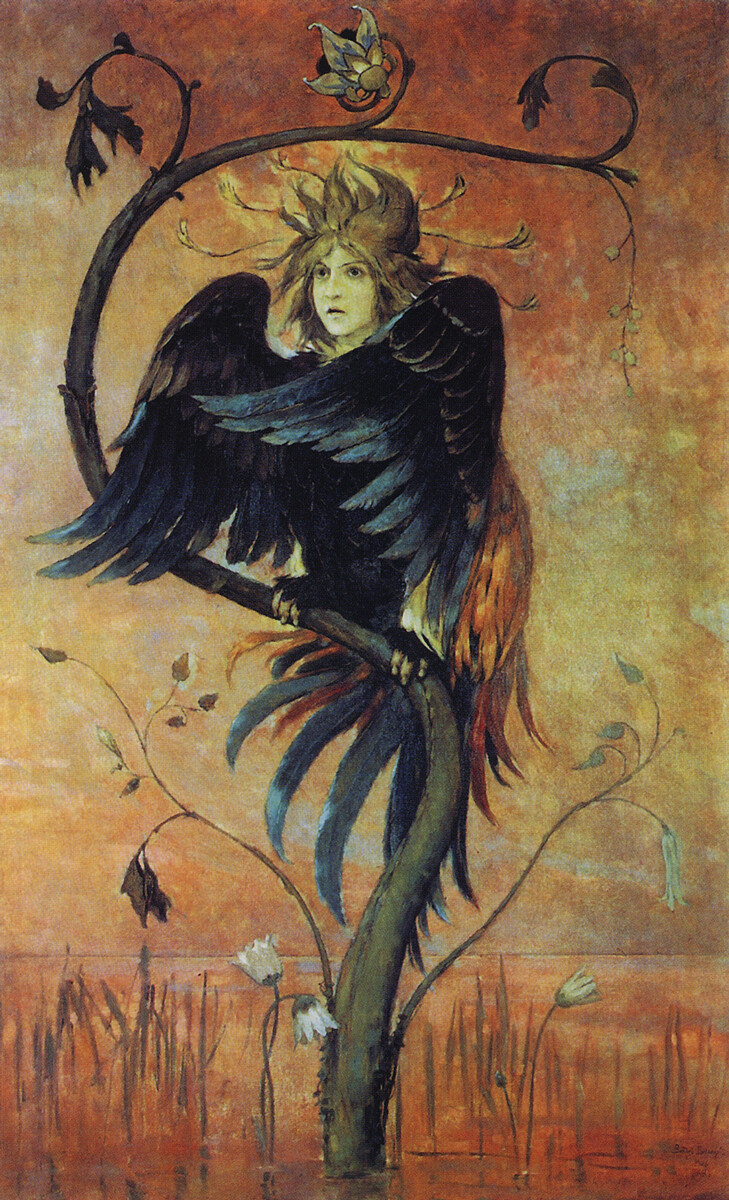
Gamayun, a prophetic bird, 1898, Viktor Vasnetsov
P.S. Gamzatova Dagestan Museum of Fine Arts / Public DomainThe relatively modern image of Gamayun was offered in the 1897 painting by Viktor Vasnetsov titled: ‘Gamayun, the Prophetic Bird’, where the black-winged bird is depicted by the painter with a sorrowful, “devoid of any nobility” woman’s face with child-like features.
If using any of Russia Beyond's content, partly or in full, always provide an active hyperlink to the original material.
Subscribe
to our newsletter!
Get the week's best stories straight to your inbox